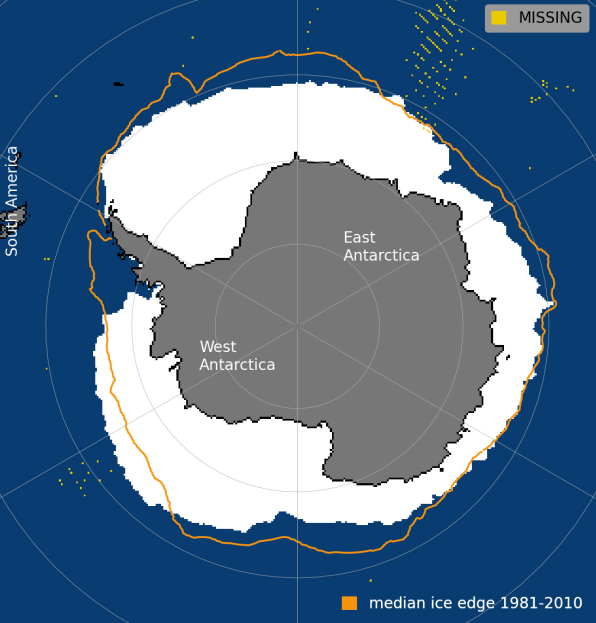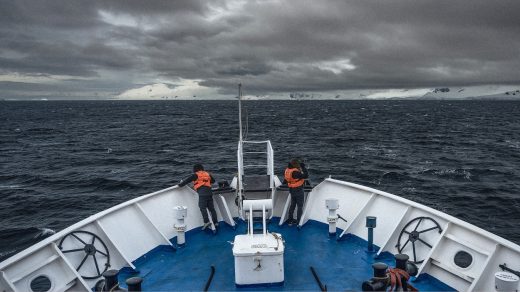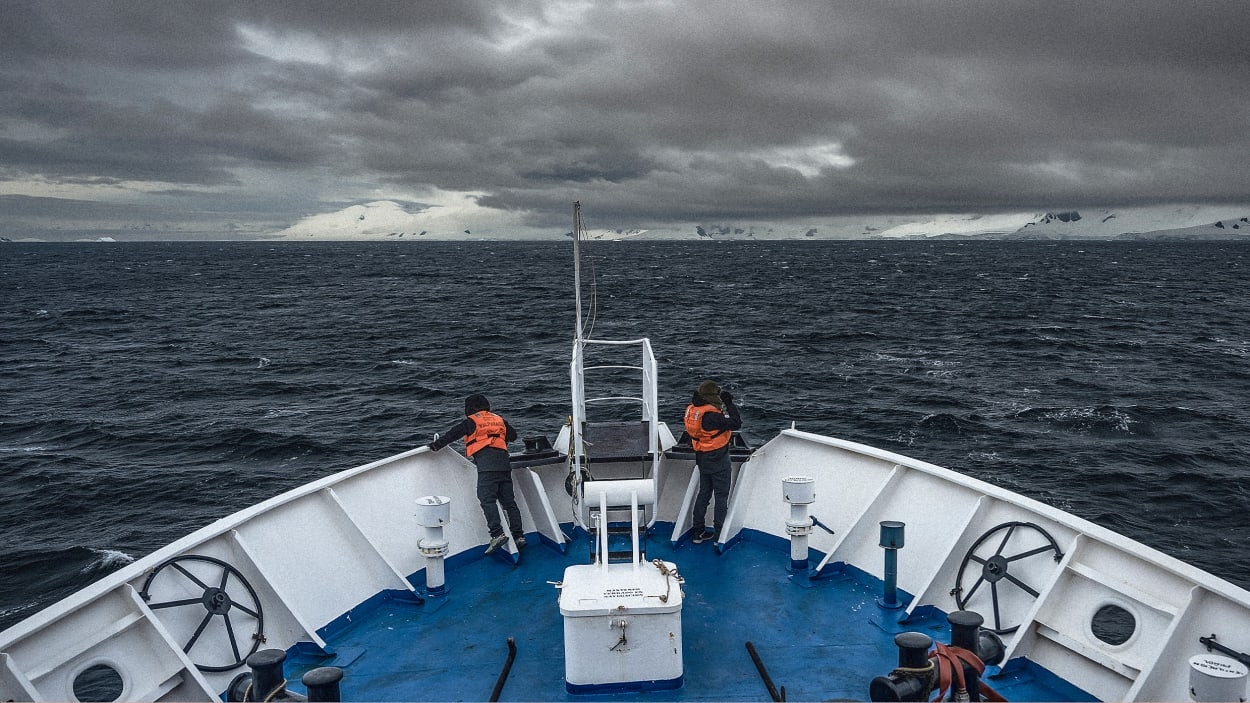What is a 5-sigma event? Why the sea ice in Antartica is alarming scientists
It’s currently winter in Antarctica, but that doesn’t mean the polar region is exempt from the extreme temperatures that are scorching the world. While normally the ocean around Antarctica freezes in the winter, growing sea ice that is essential to the marine food web, this year that ice isn’t growing as usual.
“What we’re seeing this year we’ve never seen before,” says Oscar Schofield, chair of the Marine Science Program at Rutgers University and one of the principal investigators for Palmer LTER, a Long Term Ecological Research site on Antarctica. “Unless something dramatic happens in late winter, which I’m not expecting, this will be the lowest year ever recorded for sea ice.”
Sea ice grows throughout the winter, historically reaching its peak in September at about 19 million square kilometers, or 7 million square miles. (North America, for comparison, is about 9.5 million square miles.) But the ice isn’t growing to that level this year. The decline is so extreme that researchers have been calling it a “five-sigma event,” basically referring to how many standard deviations it is beyond the mean: “It’s like, okay, we’re five times outside of deviations,” Schofield says, “so it’s an extreme event.”

[Image: Julienne Stroeve, National Snow & Ice Data Center]
As of June 27, Antarctic sea ice measured 1.6 million square kilometers (618,000 square miles) below the previous record low for that date set in 2022, according to the National Snow & Ice Data Center—and more than 2.6 million square kilometers (1 million square miles) below the 1981 to 2010 average.

Before 2015, some areas around Antarctica would see large declines in sea ice, but other areas were still growing more, so it essentially balanced out. Since 2016 there’s been a “hemispheric decline” in the amount of sea ice year to year. “But this year is particularly stunning in how little sea ice has formed around the continent,” Schofield says.
The trend has big implications for the planet. Antarctica is already warming faster than the rest of the world, with the Antarctic Peninsula in particular warming five times faster than the global average. The ocean also takes in a lot of the atmospheric carbon that we produce, and the Southern Ocean, also known as the Antarctic Ocean, is responsible for 30% to 40% of that.
?“If you change the state of the Southern Ocean, there’s great potential for it to have big ramifications on planetary carbon, biogeochemistry, and all those kinds of things,” Schofield says. “There are a lot of discussions going on now about, what does a super-low-sea-ice year like this mean?”
There are also questions about what the decline means for the Antarctic life that has evolved around sea ice. In the winter, Antarctic winds increase, which can mix up the ocean water. Sea ice provides a substrate, or “tabletop,” Schofield says, that protects the surface of the ocean. The upper ocean is important for plants that need to catch sunlight, and in years after there’s been a lot of sea ice, researchers tend to see big blooms of plankton in the spring—which then feed krill, ensuring there’s krill to feed whales, penguins, fish, and so on.
“One prediction might be that with no sea ice, plankton blooms are smaller, and then we see that ripple up through the food web,” Schofield says. His research team is just starting to gear up for its field work, which begins in October and includes research cruises in January, so he’s not quite sure what the impact of this low-sea-ice winter will be down the line.
“Is this going to be one of those years where the system fundamentally flips to be in a new state? We don’t know the answer,” he says. “But we do know that this [extreme] level is going to be sort of a prime experiment in terms of what future Antarctic ecosystems might look like.”
Ecosystems could also be affected by warming water, and less sea ice means the ocean absorbs more warmth from the sun. (White ice reflects the sun, but the blue of the ocean absorbs heat from sunlight.) “Once it starts to run away it becomes worse,” says David Holland, a professor of mathematics and climate science at New York University who studies both the Arctic and Antarctic. “When summer comes to polar regions, it’s 24 /7 sunlight . . . and so you just get this really big impact. . . . Not having ice means sunlight is absorbed really efficiently by the blue ocean.”
Less sea ice doesn’t change the sea level, though, since sea ice often melts and re-forms—but it can cause the planet to warm faster than current models show, Holland adds. And if that warm ocean starts to melt the continent of Antarctica and its thick, miles-deep ice, that means sea levels could rise.
These trends certainly stem from human-induced climate change and higher levels of carbon dioxide in the atmosphere, but natural climate cycles like El Niño can magnify the effects of climate change. Essentially, a lot of things are happening to the planet at once—but the lack of sea ice and the condition of the Antarctic is extreme. “It’s absolutely mind-boggling,” Holland says. “It’s such a massive change.”
(18)



